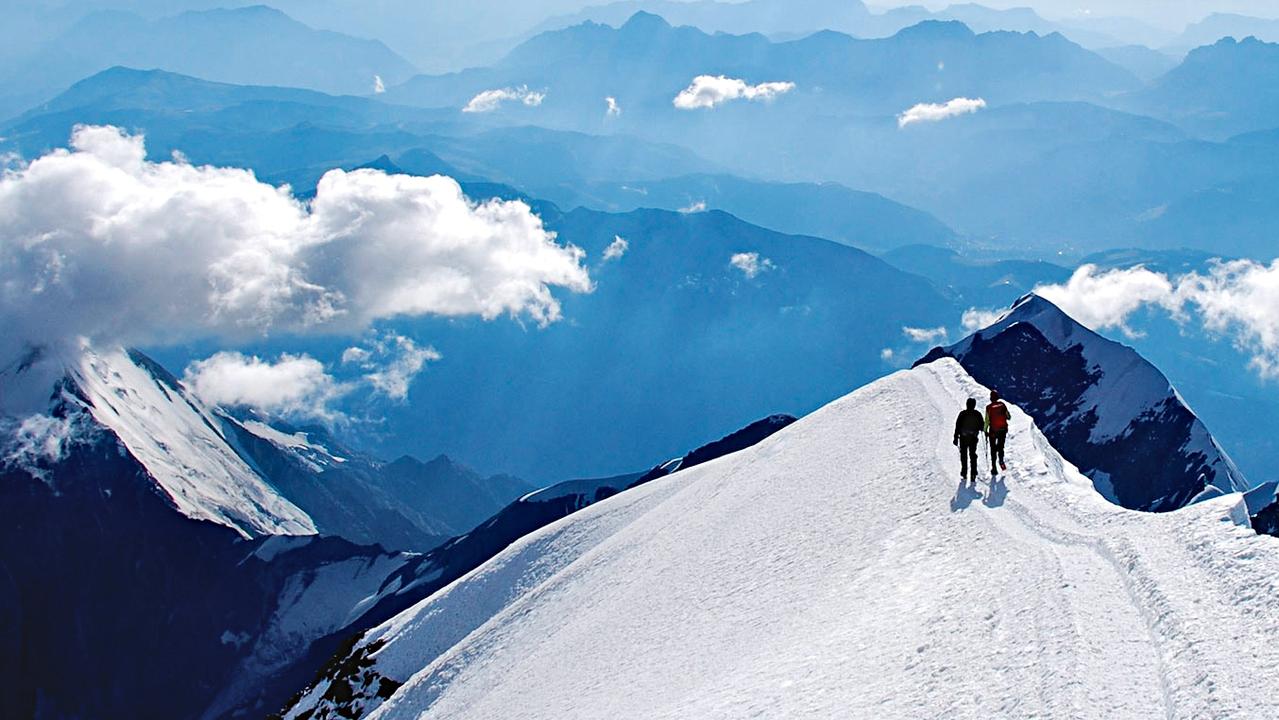Eau la la ... I've been sprung!
KEVIN Pilley travels along France's famous Water Route to taste the curative spa waters at their source and discovers the meaning of the term 'water retention'.

MY impersonation of Keith Floyd in full flight was lost on the the Mayor of Volvic. "You can almost taste the cretaceous limestone and the glacial beds," I gushed. "I've always been partial to the Tertiary era. It's my favourite year for natural spring water."
Monsieur Laurency sipped at his pastis. "No one drinks much Volvic in Volvic unless they're ill," he admitted, looking at me suspiciously.
He then looked at Aicha Lefort, landlord of the Tilt Bar in the middle of the village, near a fountain where the sign says "Non Potable".
Lefort nodded back. "It's true. I use it in my coffee," he said. "And occasionally to top up the battery of my car."
To forestall dehydration, Monsieur Le Mairie bought me a lightly effervescent, health-giving Kronenberg. Soon I felt well-being diffusing rapidly around my body, and a little later I was enjoying beer's famous diuretic properties.
I had been travelling Le Route des Villes D'Eaux in the Auvergne region of central France. The water route takes you to France's famous spa towns, as well as to the source of the famous curative waters.
Most bottling plants offer degustations. At Volvic, after visiting the bubbling source in a dark, wet grotto, a Belgian family and I had a lesson in volcanic hydrology.
We drank peach- and pineapple-flavoured Volvic and heard how the unique geology of the Puy-de-Dome and Volcano de Nugere gives Volvic its distinctive taste.
We lifted our glasses to the light and swilled the water in our mouths like connoisseurs.
It takes 15 years for rainwater to percolate through the rocks and turn into something that will cure kidney stones and make you walk straight if you drink enough of it and less of something else.
A history lesson was thrown in too: with 1200 known springs, France is the world's leading producer; the French don't actually drink as much natural spring water as the Italians or the Germans; and Germany markets more than 400 types of mineral water compared to France's 50.
Hannibal was the first to discover Perrier. He's reputed to have taken the waters at Les Bouillens, at Vergeze, in the vineyards of the Languedoc before attacking Rome in 218BC.
In 1894, Dr Louis Perrier, of Nmes, leased the spring and began selling the health-giving water. A British management team took over in 1906.
In fact, one of the most famous symbols of France and French life is British.
The distinctive green Perrier bottle was invented by Sir John Harmsworth, brother of Lord Northcliffe, who founded The Daily Mail newspaper.
He got the idea from the shape of a pair of old Indian exercise clubs he used while recovering from a road accident.
Evian, discovered in 1789, is France's best-selling still water with 1.3 billion sold worldwide each year.
Badoit, which bubbles up from the granite hills of Saint-Galmier, near Lyons, is the gourmets' water; it's also France's oldest, having been first bottled commercially in 1837.
"You can always recognise a Badoit drinker," the Mayor of Volvic told me. "They always have nice teeth. It has more fluoride than Volvic."
Vichy is still the best-known spa; people take "la medicine douce" every day at the fountains in the grandly colonnaded Halles des Sources, where the beau monde of the 19th century went to sip off their excesses and French colonials were sent to cure themselves of the tropics.
The thermal baths were built as a toy for the daughter of Louis XVI. The town was known to the Romans as Vucus Calidud – the hot town.
The French government still sends people to Vichy to take the cure. Cures are paid for by social security, with 30,000 enjoying this healthy state hand-out every year.
The hot alkaline waters are recommended to alleviate liver problems, rheumatism and muscle complaints. A three-week cure is meant to put 10 years on your life.
During my tour around the Water Route, I learned some fascinating things about water. That we eliminate 2.5 litres of it every day, and we renew our body water every 10 days, a tenth of it by swallowing our own saliva.
I cultivated a taste for Arvie, an "eau mineralle naturelle" with a low magnesium level.
I worked up a thirst by walking up into the valley of Chaudefour to see the waterfalls and to taste the lukewarm and pungent St Anne water at source.
I drank the local water while enjoying a wonderful regional lunch at L'Auberge des Muletiers at Orcines. I maintained my hydratic equilibrium and optimal renal function with more food and drink in St Nezaire and La Borboule.
By the time I returned to the village of Volvic, I was quite literally suffering from serious water retention. I had become a water bore.
The mayor shook my hand, welcoming me again to his wonderful town and local. He was still holding his pastis.
"Un autre?" he asked, looking towards the beer tap. I said "Oui" and "Merci", knowing the prevention of dental caries and the production of bone cartilage would have to wait.
The Sunday Telegraph



